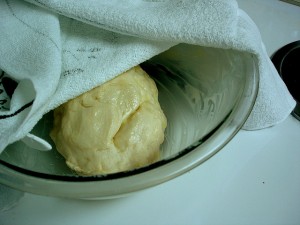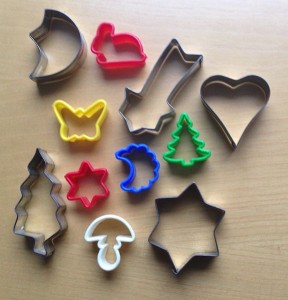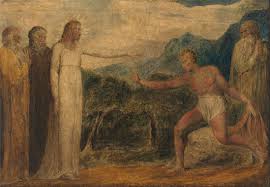We live in an age of acceleration, in an era so seduced by the instantaneous that we’re in grave danger of losing our ability to wait. – Sue Monk Kidd
Sue Monk Kidd wrote these words in 1990, before smart phones and always-on accelerated our lives in ways we couldn’t have imagined way back in the good old days of AOL dial-up. Yet our culture was already moving at the speed of frantic twenty-five years ago. The expectation of instant has come at a high cost. She asks, “Where is our willingness to incubate pain and let it birth something new? What has happened to patient unfolding, to endurance?”
I’m blogging my way through her book When The Heart Waits, which offers some helpful, discussion-worthy insights for those who are jowl-deep in midlife transition. To read the first in this series, click here. In Chapter 2, she addresses what hurry-up does to our souls as we face the transition into midlife. The excruciating, painful time of waiting in the cocoon is the only way through to spiritual growth. “To be spiritual is to confront the pain, rather than make an enemy of it,” Kidd writes. “When Jesus told us to love our enemies, I suspect that he was talking about our inner enemies too.” She notes that most of us don’t know how to wait at all. We either grit our teeth or flail frantically in an effort to squirm free of the discomfort of waiting. That discomfort is correlated to our aversion to feeling deep existential loneliness. We will try anything to rid ourselves of the kind of loneliness that goes along with waiting. Kidd writes,
Mostly I saw life ‘happening’ in the future. It can be jolting to discover how much of life we project there.
I didn’t have words for it, but a decade ago, I first felt the shadows of midlife falling across my life. Those shadows didn’t just obscure light, they had an isolating personality all their own. So I took a job I expected would chase the shadows to the far horizon, a pre-emptive strike against the kind of lonely waiting that came from not knowing who I was outside of what I did as a full-time home-school mom and part-time writer and tutor. I may not have been all that clear on who I was as a person in the eyes of God, but I had great clarity about what others seemed to value about me.
I figured I could avoid the empty-nest crisis if I built a bridge into a busy-busy life after kids. My clever strategy to keep the pain at bay did not work. After two years, just as my youngest was about to graduate from high school, I resigned the staff position that was my bulletproof insurance policy against midlife’s crisis. We relocated a couple of months or so after that. Ka-blooey! All of the pre-emptive planning I’d done so I could catapult across the chasm of midlife directly into the next chapter without so much as a whiff of pain splattered all over my life like a water balloon.
I was facing confusion more profound than I could have imagined, and I had no choice but to wait…and wait…for a Plan B to emerge. The spiritual disciplines I’d built into my life to that point sustained me during the weeks that stretched into months, then years. Other helps for me included a husband who was in the same uncomfortable waiting zone I was as it bonded us during a time when these changes were driving apart other couples we knew, and the gift of a faithful prayer partner willing to help me put words to what God was doing in my life.
Those disciplines and relationships taught me a thing or two about leaning hard into the right now – doing the exact thing every cell in my body was telling me to avoid. How I wanted to run! I didn’t have much desire to head backwards to the good ol’ days, bu t my impulse was to head directly into the future, whatever that was. God showed me that staying put (for what? for how long? arrrgh!) was what obedience to him looked like. Doing anything else would have short-circuited the transforming work he was doing in me, and was the beginning of unmooring myself from my addiction to all the coping mechanisms that had been so successful for me as I built the first half of my life. The waiting was a faithwalk, even though I didn’t feel as though I was going anywhere.
t my impulse was to head directly into the future, whatever that was. God showed me that staying put (for what? for how long? arrrgh!) was what obedience to him looked like. Doing anything else would have short-circuited the transforming work he was doing in me, and was the beginning of unmooring myself from my addiction to all the coping mechanisms that had been so successful for me as I built the first half of my life. The waiting was a faithwalk, even though I didn’t feel as though I was going anywhere.
Sue Monk Kidd ends her chapter with the story of baking bread with her young daughter. At first, the girl was impatient with the process of letting the bread rest before baking. But when she saw how the lump of dough expanded with warmth, time and solitude, she said, “It’s yeasting!” What a great word, and an apt metaphor for what is happening when it looks like when the compass guiding the first half of our lives seems to spin in indeterminate circles and we’re forced to invited to stay put and yeast. It may not make a very interesting task list, but yeasting is precisely what is happening in the “Now what, Lord?” zone.
When you’ve been put into a “yeasting” mode, what relationships or practices have sustained you during the wait?
Image from Flickr, Creative Commons 2.0















